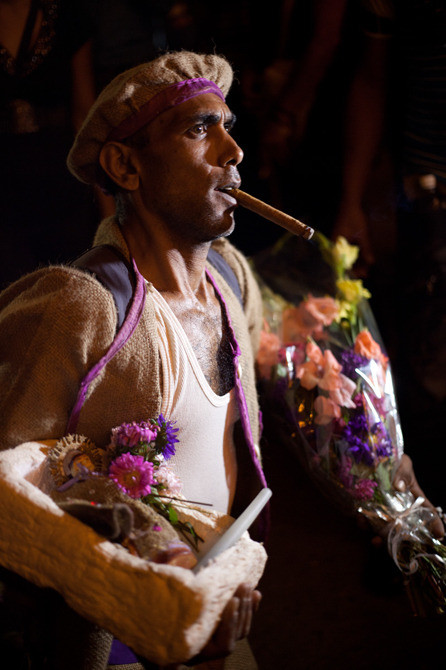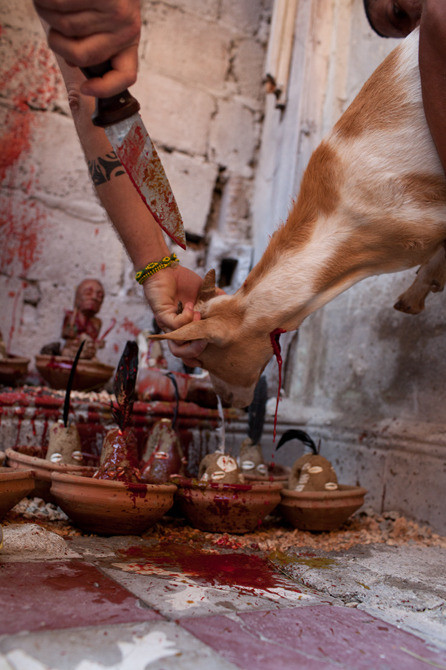
Santeria grew in social ceneres called cabildos. The cabildo pictured is one of the oldest in Cuba; it’s located in Palmira, which is often regarded as the birthplace of Santería.
The pilgrimage of San Lazaro is the largest religious event in Cuba. Every December 17, people come from all over the country to pray for good health or to be healed. Many of them go to great lengths to show their dedication, such as this man who dragged a concrete statue on his back for nine miles.

The ceremony of San Lazaro at El Rincón church lasts all night, culminating in a midnight mass. Over the course of the night and the following day, thousands of people from all walks of life visit to make offerings and ask for help from San Lazaro.
Santería is not regarded as an official religion by the state and therefore has no official places of worship; the ceremonies are carried out in the houses of the santeros. Various charms represent luck and protection. This pigeon was hanging above the door throughout the ritual, which lasts several days.
Herbal mixtures are used to cleanse those involved in the ceremony, in addition to the spraying of rum as a blessing. The mixtures are prepared by hand for a long time so they can encase the positive, cleansing energy from those making them.
Animal sacrifice is an integral part of the rituals. Before the sacrifice, the animal is passed between those involved to take away their negative energy, which will then be released through the animal's death. Music is also an important part of the practice; the Orishas are raised and brought into the physical realm through drumming and African-style call-and-response chanting.
A babalawo blessing the people with ceremonial corn powder. Over hundreds of years, believers have projected their worship of the Orishas onto images of Catholic saints. Nowadays, the religion is a true mixture of beliefs, with adherents taking different aspects on board—either leaning towards the Catholic or African side, depending on their personal choices.

Each of these clay statues is an Ellegua, which Santería adherents receive in order as they gradually complete their initiations.